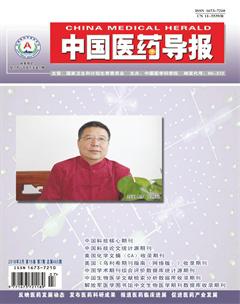人转录因子Slug过表达慢病毒载体的构建与鉴定
周园红 罗幼珍 周晓琳 刘强
[摘要] 目的 构建Slug过表达的慢病毒载体,为探讨Slug在肿瘤复发转移中的影响提供前期基础。 方法 从人乳腺癌细胞MDA-MB-231中获得Slug基因片段,与Age Ⅰ/Nhe I酶切后成线性化的GV367载体连接,采用PCR及DNA测序的方式鉴定阳性克隆。将构建的LV-Slug转染入293T细胞中,采用荧光法检测LV-Slug的病毒滴度。 结果 经测序证实Slug基因已成功插入到病毒载体中,其病毒滴度为5×108 TU/mL。 结论 成功构建了携带Slug过表达的慢病毒载体,为探讨Slug在肿瘤转移复发中的影响提供基础。
[关键词] 信号转录因子Slug;慢病毒载体;构建;肿瘤复发转移
[中图分类号] R394 [文献标识码] A [文章编号] 1673-7210(2018)03(a)-0012-04
[Abstract] Objective To construct recombinant lentivirus with Slug gene for further exploring the effect of Slug in metastatic recurrence. Methods The Slug gene was acquired from the breast cancer cell MDA-MB-231 by PCR assay, which was then connected into linearized GV367 vector digested by Age Ⅰ/Nhe I enzyme. The positive clones were identified by PCR and sequencing analysis. The constructed lentiviral vectors with Slug gene were then transfered into 293T cell lines. The lentivirus titer was detected by the fluorescence method. Results The lentiviral vector with Slug gene was successfully constructed and obtained, the virus titer of which was 5×108 TU/mL. Conclusion The lentiviral with Slug gene are successfully constructed, which will provide the experimental foundation for further exploring the effect of Slug in metastatic recurrence.
[Key words] Signal transcription factor Slug; Lentivirus vector; Construction; Metastatic recurrence
Slug又称为SNAI2,是锌指转录因子Snail家族成员之一,主要参与胚胎发育以及肿瘤细胞侵袭迁移等恶性表型的调控[1-3]。Slug在多种类型的人类肿瘤组织中均有表达,并且其表达量与肿瘤低分化,肿瘤的复发转移及不良预后密切相关[4-6]。大量临床危险因素相关性分析表明,Slug表达增高是多种肿瘤转移后复发的主要危险因素[7- 8],Slug可上调原发肿瘤细胞的细胞周期蛋白Cyclin D1,促进细胞周期G1/S转换,进而启动肿瘤细胞增殖[9],提示Slug在肿瘤的转移复发中发挥着重要的作用,但目前机制尚不清楚。本研究构建Slug过表达慢病毒载体(LV-Slug),为探索Slug基因在肿瘤转移复发的影响提供实验基础。
1 材料与方法
1.1 主要试剂
In-FusionTM PCR Cloning Kit购自clontech公司,PCR反应试剂盒购自Takara公司,Restriction Endonuclease 购自NEB公司,Clon ExpressTM One Step Cloning Kit购自Vazyme公司,TOP10 competent cell购自Genechem公司, Lipofectamine 2000 购自Thermo公司,GV367载体、pHelper 1.0载体和pHelper 2.0载体购自上海吉凯基因,引物由Gene Ray公司合成。
1.2 方法
1.2.1 获得线性载体
载体:GV367;克隆位点:Age Ⅰ/NheI;反应条件:37℃ 3 h。
1.2.2 获得目的基因
从GeneBank上查找人Slug基因的序列,基因编号NM_003068。扩增引物,上游引物:5′-GAGGATCCCCGGGTACCGGTCGCC ACATGCCGCGCTCCTTCCTGGTCAAG-3′,下游引物:5′-CACACATTCCACAGGCTAGTCAGTGTGCTACACAGCAGCCAG-3′。PCR的方式从MDA-MB-231细胞中从获得目的片段。
1.2.3 重組质粒构建[10]
1.2.3.1 目的基因与线性化的载体交换 在冰水中配置反应体系(表1),于37℃ 30 min后,冰水中5 min后立即转化。
1.2.3.2 转化 将交换反应产物(10 μL)与感受态细胞(100 μL)混匀后,冰水30 min,42℃ 90 s后冰水2 min,取1 mL加入500 μL LB培养基中扩大培养。取适量菌液均匀涂布在含有抗生素的平板上,37℃倒置培养12~16 h。
1.2.3.3 阳性克隆PCR鉴定 挑取单个菌落至鉴定体系中(2×Taq Plus Master Mix 10 μL,上游和下游引物各0.5 μL,DdH2O 9.0 μL),混匀后采用PCR鉴定。上游引物:GGGTCAATATGTAATTTTCAGTG,下游引物:CGTCGCCGTCCAGCTCG ACCAG。反应条件为:94℃ 3 min,94℃ 30 s、55℃ 30 s、72℃ 30 s×22循环,72℃ 5 min。阳性克隆结果测序分析。
1.2.4 质粒转染及慢病毒收获[11]
①制备DNA转染液:GV367载体20 μg、pHelper 1.0载体15 μg、pHelper 2.0载体10 μg、Lipofectamine 2000混匀后调整总体积为1 mL,室温下孵育15 min;②将以上混合液滴加至无血清培养基预处理2 h的293T细胞中培养;③6 h后PBS清洗3次,常规培养基中培养48 h。
1.2.5 慢病毒浓缩与纯化定
①转染48 h后,收集293T细胞上清液(4000 g ×10 min ×4℃);②0.45 μm滤器过滤上清液后进行超速离心(50 000 g×2 h×4℃);③弃上清液,用PBS重悬病毒沉淀,轻吹打混匀后分装。
1.2.6 荧光法测定慢病毒滴度
①制备病毒梯度稀释液;②取90 μL如上倍比稀释的含病毒液的培养基培养细胞24 h;③完全培养基培养4 d,荧光显微镜观察细胞内荧光表达情况。病毒滴度(BT=TU/mL)計算公式:TU/μL=荧光细胞数×V×稀释倍数;V=每孔加入病毒稀释液体积(μL),TU/Ml=TU/μL×1000。
2 结果
2.1 酶切载体获得
GV367载体经限制性内切酶Age I/Nhe I切断,琼脂糖凝胶电泳鉴定。见图1。
2.2 Slug基因获得
根据GenBank的Slug基因编码区设计引物,采用PCR扩增目的片段,经1%琼脂糖凝胶电泳检测,可见一条带大小约853 bp,与理论值一致。见图2。
2.3 阳性克隆
2.3.1 阳性克隆
阳性克隆PCR产物条带分子量约1396 bp,阴性转化子条带分子量约661 bp。见图3。
2.3.2 阳性克隆测序
测序结果与目的基因序列完全一致。见图4。
2.4 病毒滴度测定
随机选择3个质粒转染293T细胞,48 h后荧光显微镜观察:质粒转染后的细胞可见绿色荧光,提示转染成功。见图5(封三)。经荧光法测定,慢病毒滴度为5×108 TU/mL。
3 讨论
慢病毒(Lentivirus)载体是以人类免疫缺陷型病毒(HIV)为基础开展起来的基因治疗载体,目前该技术在实验室及临床前研究中得到广泛使用[12-13]。
大量临床危险因素相关性分析表明,Slug表达增高是多种肿瘤转移后复发的主要危险因素[7-8],提示Slug在肿瘤转移复发及肿瘤休眠细胞激活增殖中发挥着重要作用。现有研究结果也证实:体外诱导形成的休眠肿瘤细胞中的Slug表达水平明显降低[14-15],但Slug是否参与肿瘤休眠细胞的激活,目前尚不清楚。实验室研究证实:下调Slug表达能抑制直肠癌细胞,前列腺癌细胞,食管癌细胞的增殖能力,同时,过度表达Slug基因可增强胶质瘤细胞的增殖能力[4,16-18]。因此,有必要探讨Slug对肿瘤复发的影响。
总之,本实验成功构建含Slug基因的慢病毒载体,滴度为5×108 TU/mL,为后续进一步探索Slug基因在肿瘤复发转移影响打下基础。
[参考文献]
[1] Wu WS,Heinrichs S,Xu D, et al. Slug antagonizes p53-mediated apoptosis of hematopoietic progenitors by repressing puma [J]. Cell,2005,123(4):641-53.
[2] Wu ZQ,Li XY,Hu CY,et al. Canonical Wnt signaling regulates Slug activity and links epithelial-mesenchymal transition with epigenetic Breast Cancer , Early Onset (BRCA1) repression [J]. Proc Natl Acad Sci USA,2012,109 (41):16 654-16 659.
[3] Cobaleda C,Pérez-Caro M,Vicente-Dueas C,et al. Function of the zinc-finger transcription factor SNAI2 in cancer and development [J]. Annu Rev Genet,2007,41(1):41-61.
[4] Pullka OP,Nillson B,Sarlomo-Rikala M,et al. SLUG transcription factor:a pro-survival and prognostic factor in gastrointestinal stromal tumour [J]. Br J Cancer,2017,116(9):1195-1202.
[5] Tang Y,Liang X,Zhu G,et al. Expression and importance of zinc-finger transcription factor Slug in adenoid cystic carcinoma of salivary gland [J]. J Oral Pathol Med,2010, 39(10):775-780.
[6] Shih JY,Yang PC. The EMT regulator slug and lung carcinogenesis [J]. Carcinogenesis,2011,32(9):1299-1304.
[7] Cheng WY,Kandel JJ,Yamashiro DJ,et al. A multi-cancer mesenchymal transition gene expression signature is associated with prolonged time to recurrence in glioblastoma [J]. PloS one,2012,7(4):e34 705.
[8] Hasan M,Sharma R,Saraya A. Slug is a predictor of poor prognosis in esophageal squamous cell carcinoma patients [J]. PloS one,2013,8(12):e82 846.
[9] Casimiro M,Velasco-Velázquez M,Aguirre-Alvarado C,et al. Overview of cyclins D1 function in cancer and the CDK inhibitor landscape:past and present [J]. Expert Opin Inv Drug,2014,23(3):295-304.
[10] Giry LM,Verhoeyen E,Salmon P. Lentiviral vectors [J]. Methods in Molecular Biology, 2011,737(1):183-209.
[11] 眭蕊,劉群,李锐锐,等.人FGF-9慢病毒表达载体的构建、包装及鉴定[J].中国医药导报,2013,1(30):16-19.
[12] 段司沁,范遥,赵雪,等.CXCR4慢病毒表达载体的构建及细胞转染[J].实用医学杂志,2015,31(17):2786-2789.
[13] Theophilus S,Vijaykumar, Avindra Nath,et al. Chloroquine mediated molecular tuning of astrocytes for enhanced permissiveness to HIV infection [J]. Virology,2008, 381(1):1-5.
[14] Akin A,Ralph WW,Dominique W,et al. SNAI2/SLUG and estrogen receptor mRNA expression are inversely correlated and prognostic of patient outcome in metastatic non-small cell lung cancer [J]. BMC Cancer,2015,15(1):300-307.
[15] Zhou Y,Liu Q,Dai X,et al. The trans-differentiation of alveolar epithelial cells Ⅱ may induce reactivation of dormant tumor cells by enhancing TGF-β1/SNAI2 signaling [J]. Oncology Reports,2017.DOI:10.3892/or.2018. 6247
[16] Zhou W,Lv R,Qi W,et al. Snail contributes to the maintenance of stem cell-like phenotype cells in human pancreatic cancer [J]. PLoS One,2014,9(1): e87 409.
[17] Esposito S,Russo MV,Airoldi I,et al. SNAI2/Slug gene is silenced in prostate cancer and regulates neuroendocrine differentiation, metastasis-suppressor and pluripotency gene expression [J]. Oncotarget,2015,6(19):17 121-17 134.
[18] Liao H,Bai Y,Qiu S,et al. MiR-203 downregulation is responsible for chemoresistance in human glioblastoma by promoting epithelial-mesenchymal transition via SNAI2 [J]. Oncotarget,2015,6(11):8914-8928.

